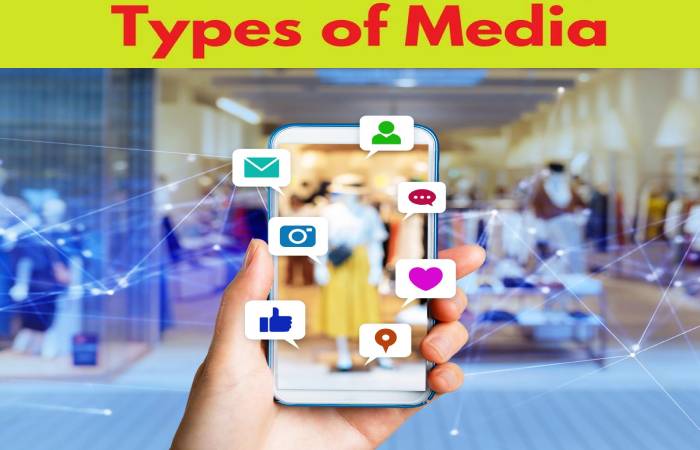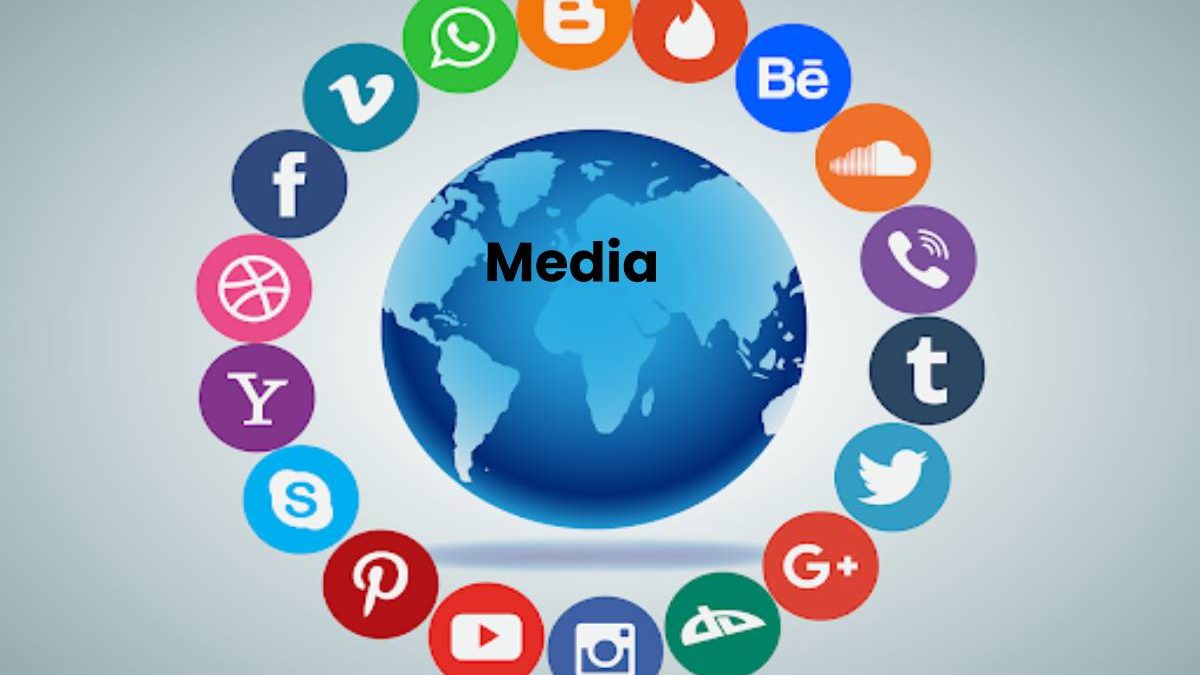Table of Contents
Media Definition
Media, all those instruments, channels, or forms of transmission of information that human beings use to carry out the communication process.
And also, the media are so broad that they range from writing to today’s information and communication technologies.
According to the concept of a specific communication medium, sender and receiver roles may or may not interchange. That is why the press responds to at least two great communication paradigms:
1) One-way communication, in which the only one of the subjects acts as a sender in front of a receiver.
2) Bidirectional or multidirectional communication, in which the receiver or receivers become senders and vice versa.
Role of the Media

The media’s primary function is to transmit a message, which directs from a sender to a receiver.
They also fulfill more specific functions such as informing, persuading, presenting ideas, motivating participation, and entertaining. Everything will depend on the purpose for which they employ.
Types of Media

The media usually classify in different ways, but the most widespread form of doing it responds to the type of information they transmit: public interest or private interest.
In this sense, an essential differentiation can make between interpersonal media and social media. Let’s see.
1. Media of Personal Interest
The means of interpersonal communication or personal interest use to establish communications between people. They are those that allow two or more people to communicate within the private sphere. Therefore, they necessarily respond to the bidirectional communication paradigm. For example:
- Post mail;
- Telegraph (morse code);
- Telephone (pulse phones, touch-tone phones, cell phones, and smartphones );
- Email;
- And also, instant messaging networks, among others.
2. Media of Public Interest
The means of communication of public interest, also known as mass or social communication media ( mass media in English), transmit information of a general nature to the masses. They are generally governed by the one-way communication paradigm, although there are exceptions.
The media of social communication has enormous power to influence, guide, and shape public opinion. Hence, it is also called the fourth estate. For this reason, one of the main objectives of undemocratic governments is to censor independent media and use them for their benefit.
Printed Media
- Printed media are all those printed publications, such as newspapers, magazines, brochures, etc., which use as a material medium for transmitting the information. It is the oldest means of communication.
- Its golden age spans from the 19th century to the first half of the 20th century. Currently, it continues to be a prestigious medium.
- Still, the general public’s interest in it has gradually declined to migrate to other media such as radio, television, and digital platforms.
Radio Media
- Radio communication media are those base on the use of radio waves to send sound signals. In this sense, the reach of the radio is greater than that of the written press.
- It listens to your transmissions. It is enough to have a radio wave receiving device. Some of the advantages of radio are its immediacy, efficiency, and low production costs.
- It is a nineteenth-century invention that is still in force and uses both analog and digital media.
Digital Media or Hypermedia
Digital communication media are those that use the Internet for the dissemination of content and information. They appeared at the end of the twentieth century, thanks to computers and new information and communication technologies.
Since then, they have caused a revolution in the way people consume, produce and interact with information.
The Internet represents a shift in the paradigm of unidirectional communication towards a multidirectional model because it allows and needs the user’s active participation.
And also, the user not only determines their searches but is also a content generator.
Simultaneously, the Internet contains all communication media possibilities in a single system: audio, image, text, databases, work tools, interpersonal communication channels, etc.
With the Internet, we have access to television, cinema, press, radio, telephone, and social networks. For this reason, many specialists do not consider it a means of communication but rather hypermedia.
As an example, we can mention:
- Search engines like Google or Yahoo;
- Youtube;
- Spotify;
- iTunes;
- Netflix;
- And also, SoundCloud, among others.
- However, these media are still expanding, and their democratization and access to the masses are still in progress.
Social Media
It covers everything. They are channels that allow the transmission of instant and personalized messages while producing and transmitting images, video, audio, and texts in a broad or massive social context. They have revolutionized the way of conceiving communication by crossing all their predecessors’ functions and adding a fundamental element: the user’s content production.
Thus, social networks or RRSS have become spaces for the promotion of projects, values, ideas, concepts, symbols, beliefs, merchandise, and services of the most varied types through the connection of real people through a system network based on shared interests (shared history, location, activities, educational level, beliefs, etc.).
Among them, we can mention:
- Instagram;
- Google Plus;
- Snapchat;
- Twitter;
- Facebook;
- Facebook Messenger;
- Tagged;
- WhatsApp;
- Skype;
- Line;
- MySpace;
- And also, Telegram.
Alternative Social Media
- Alternative media, or merely alternative media, are all independent channels of communication and social information. They do not belong to large corporate groups or the state or are not controlled by them.
- This type of it usually identifies with its plan or cause (social complaint, environment, spirituality, citizen participation, cultural life of the sector, etc.).
- They aim to create spaces representing needs, problems, approaches, and perspectives that are usually made invisible or openly censored by business groups or the State based on market or political interests.
- Within this category, you can find community radio and television stations, podcasts, brochures, and all kinds of electronic resources such as social networks, web pages, blogs, forums, etc.
Importance of the Media
- It has played a preponderant role within human development and societies. Its main objective has been to offer itself as a channel through which people communicate or obtain information.
- On the one hand, interpersonal communication media have allowed people to communicate with each other overcoming distances.
- Over the years, and thanks to technological developments, the media managed to put people from different parts of the world in contact through voice band.
- And also, modern communication media allow communication across the planet in record time.
- For its part, the mass media have a wide variety of functions: to inform, entertain, form opinions, educate. They are channels through which certain information transmit that the public seeks to know.
- In recent times, immediacy has emerged as the top quality of the media. And also, it allows consumers to immediately know relevant news and events from many parts of the world.
- And also, technology allowed the press to gain massiveness and instantaneousness.
- The mass forms a general opinion at a given moment about knowledge and judgments about the reality that surrounds it.
- And also, the mass serve as a source of publicity or promotion for organizations, foundations, enterprises, and companies; they generate educational and general interest content and allow the purchase and sale of goods and services.
Conclusion
A communication medium is a technical system used to carry out any communication. This term usually refers to those of a massive nature, those that provide information or content to the masses, such as television or radio.
Also Read: How to Take Screenshot in Windows 10, MAC, and More

